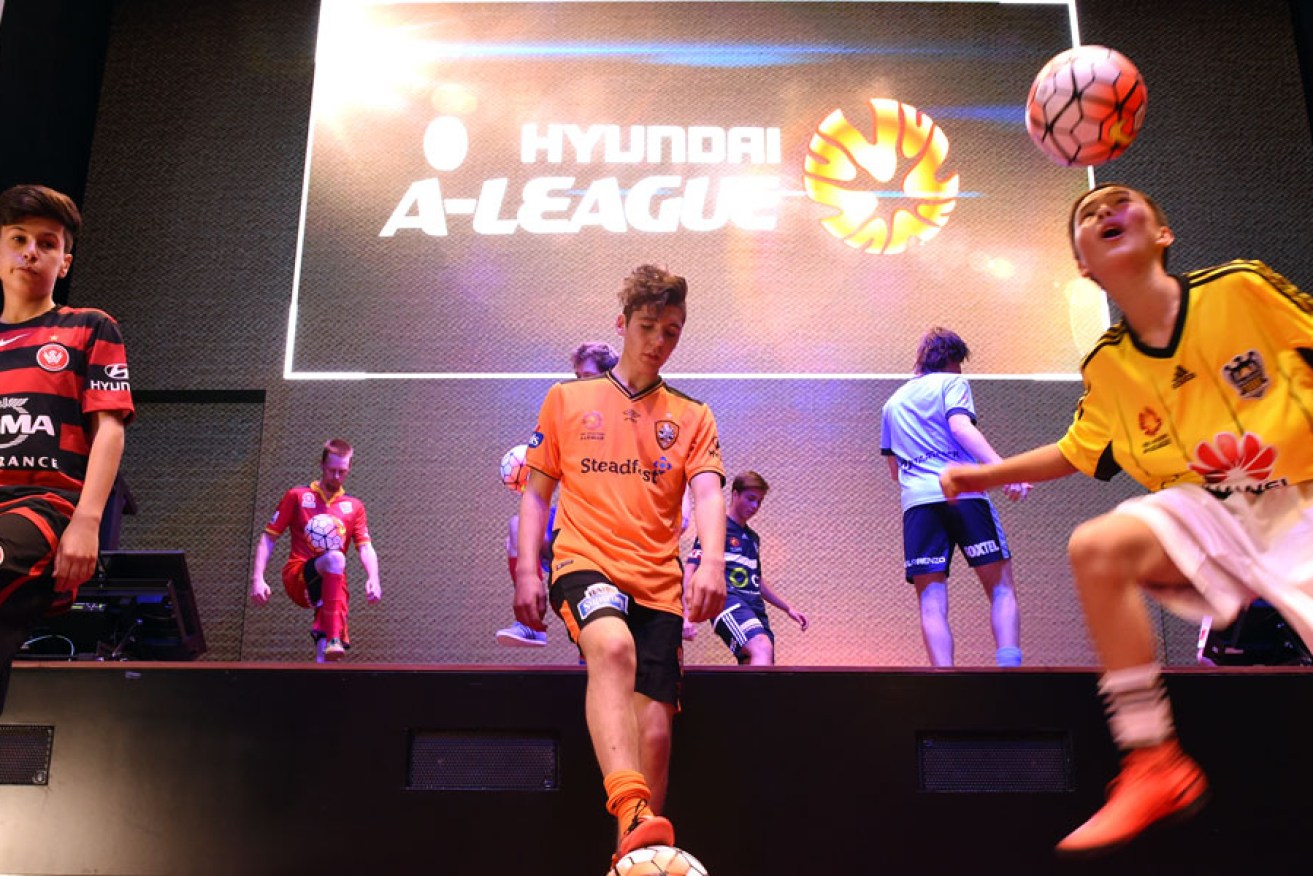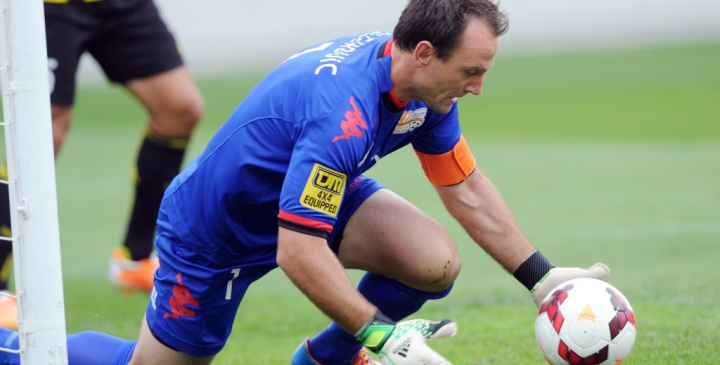Compromised A-League still a fine competition

Young footballers during yesterday's launch of the A-League season. AAP image
Welcome to season 11 of the most compromised sporting competition in the world.
Sure, I haven’t checked how every league in every country is run. But you’d struggle to find anything as regulated as our A-League.
A salary cap (but with an exemption for marquee players), a limit on the number of foreigners, a limit on squad sizes, no promotion and relegation, finals to decide the champion, playing over summer instead of winter…
It must boggle the minds of players from traditional soccer nations who ply their trade here (though they’re mostly too polite to say so).
Nevertheless, whether we agree with these regulations or not, there are reasons why they’re in place: controlling costs, keeping the league interesting and competitive, ensuring it has a presence in most big markets, freeing up media space while other codes rest, etcetera.
Discussing whether the measures used to achieve those goals are effective or needed ensures there are plenty of subjects for me (and others who write about the game) to tackle. So let’s not get rid of them all just yet.
But deep down that’s what purists would love – to remove most or all of those artificial barriers to a truly open competition.
If we were in most top soccer nations we wouldn’t be making these compromises. There’d be a free market for clubs and players, the champion team would be the one that finished first after everyone faced each other home and away, a club formed by a few people in a pub could gain promotions all the way from a Sunday league to the highest division in the land, and the season would be played in winter.
We could try it – I’m sure this totally uncompromised league would thrive for at least three weeks – but we take the more sensible option of not overplaying the hand we’ve been dealt by Australia’s geography, population and sporting landscape. Regular readers will know I don’t agree with all of the abovementioned limitations (in some cases I do agree but think an adjustment is needed) but it would be folly to remove all of them in a hurry. In any case, soccer’s governors aren’t budging on most of these fronts.
Many of these practices preceded the A-League. The National Soccer League used finals to decide the champion club for most of its existence; it ceased to have a traditional system of promotion and relegation well before its demise; and it also switched the season from winter to summer in the late 1980s. It’s no coincidence that the A-League is kicking off just days after the AFL and NRL grand finals.
But the need (whether real or perceived) to let Aussie rules and rugby league clear out of the sporting pages before the A-League begins has a couple of unfortunate knock-on effects.
The first is the long off season. It may not seem long to followers of other codes but it is for soccer. Many European leagues kicked off in August after a break of around three months.
And condensing the A-League into a shorter season combined with trying to play all rounds on weekends means the competition can’t observe FIFA international dates.
Those are dates, set years in advance by FIFA, on which clubs are obliged to allow their players to represent national teams.
There is always an international date in early October. But of course we start the A-league then because it’s when the other codes wind up. The result? For Friday night’s blockbuster against Melbourne Victory, Adelaide United will be without Tarek Elrich and Eugene Galekovic who have been selected in the Socceroos squad for tomorrow night’s match in Jordan. Victory will also be unable to select three players who were chosen in Australia’s under-23 team.
Most leagues pause for international dates (at least their top divisions do) but instead we’re having our grand launch.
Football Federation Australia might want to think about experimenting with a return to an August start (which we had in the A-League’s earlier years) for 2016-17. That will be the last season under the current TV rights deal and it would help inform the draw for 2017-18 – the first season of the next rights deal. There will probably be an increase in teams then, from 10 to 12, and that might have the competition beginning sooner to accommodate extra fixtures anyway.
Despite all these compromises, some would say shortcomings, I can’t wait for the season to start. Because when the matches are in progress, these organisational matters – important though they may be – are forgotten while the enjoyment of the game takes over.
And the A-League is a fine product. Not everyone likes it – not even all soccer fans. However, despite the obvious challenges – such as other popular codes and many overseas leagues having more quality – it delivers interest and entertainment.
It can still be improved and perhaps we will reach a stage where few of the current compromises are deemed necessary.
But while that’s happening, there’s no reason not to enjoy what we have.
Come on you Reds!
Paul Marcuccitti is InDaily’s soccer columnist. He is a co-presenter of 5RTI’s Soccer on 531 program which can be heard from 11am on Saturdays.





